| Wolverhampton High Level Station
The station was designed by the Shrewsbury and Birmingham Railway
Company's
architect Edward Banks. The site, which originally consisted
of small industrial buildings, houses, and part of the
canal, was purchased on 29th September, 1847.
The tender for construction of the station was placed on 9th
March, 1849. The Shrewsbury and Birmingham Railway Company
(known as the S & B) began using the station on 1st
December, 1851. On 1st July, 1852, the London & North
Western Railway began to run passenger trains into the
station, over the Stour Valley Line between Wolverhampton
and Birmingham.
Two buildings were initially built, the
station itself, and a grand entrance building with a booking
hall, and board room, at Five Ways. The two buildings were
at either end of a drive, 220 yards long. The entrance
building still survives, and is now known as the Queen’s
Building. It was Grade 2 Listed on 3rd February 1977, and
originally had four arches. The inner two were for
carriages, and the outer two for pedestrians. The offices
and boardroom were above the entrance, and at each side was
a row of shops. The building opened on 1st October, 1849.
The canal originally ran where the
railway station now stands. In order to build the station
the canal had to be diverted, which included the building of
a new section from Corn Hill to Broad Street, through a
cutting, and through a long tunnel under the railway station
drive. Work on the railway station came to a standstill
while the new canal was built.
When the station opened, it wasn’t complete, the refreshment room
still had to be built. The handsome white brick building,
originally called Wolverhampton General station, was renamed
Queen Street Station in September 1853, because the entrance
building faced Queen Street. After the opening of Low Level
Station in 1854 it became known as High Level
Station. |
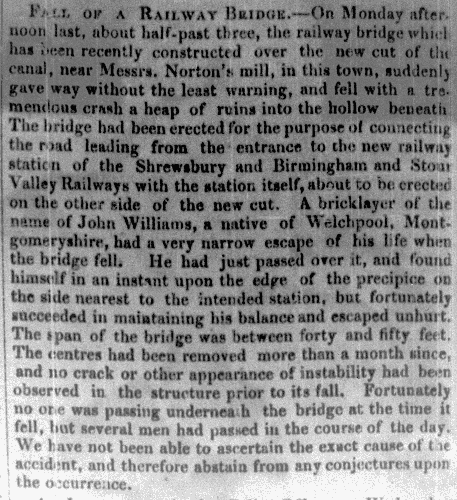
From the Wolverhampton Chronicle, 5th
December, 1849. Courtesy of
Richard Maund. |
From the article opposite, it seems that an accident
occurred during the construction of a bridge over the newly
diverted canal. The bridge, which carried the road to the
station entrance, is now part of Wolverhampton canal tunnel.
|
| This newspaper advert from 31st March, 1852 lists the
times of Sunday trains travelling between Shrewsbury and
Wolverhampton General Station (later known as
Wolverhampton High Level Station). |
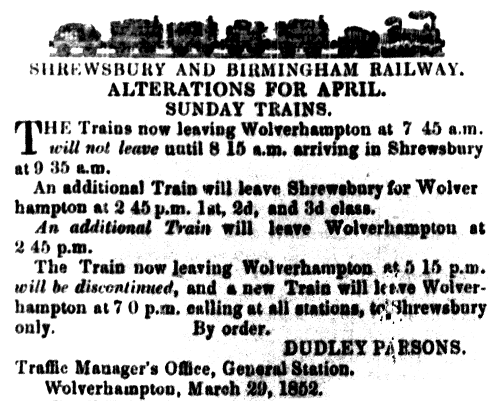
From the Wolverhampton Chronicle, 31st
March, 1852. Courtesy of
Richard Maund. |
|
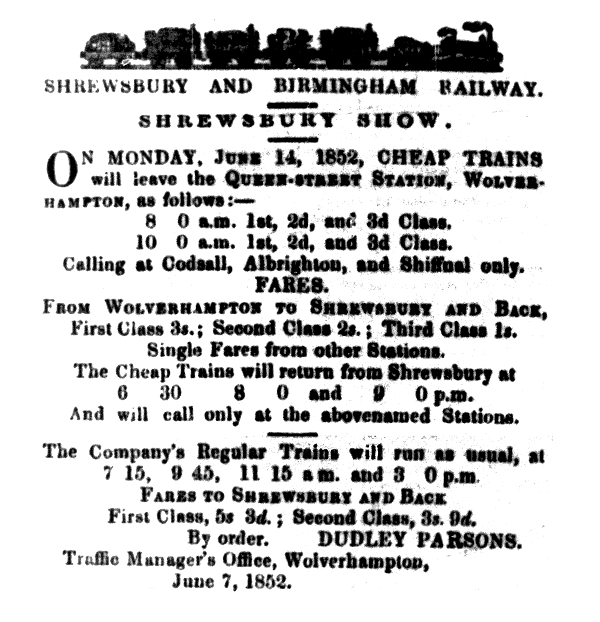
From the Wolverhampton Chronicle, 9th
June, 1852. Courtesy of Richard
Maund. |
|
| High Level
Station was to be jointly owned and operated by the S&B and
the London & North Western Railway Company, which used the Stour
Valley Line from Birmingham to Bushbury, where it joined the
company's main line to the north, known as the Grand
Junction Railway.
The S&B however, joined
the Great Western Railway and from then-on S&B trains ran into
Wolverhampton Low Level Station.
Queen Street Station was officially
renamed High Level Station on 1st June 1885. When the
Shrewsbury and Birmingham Railway joined the Great Western
Railway on 1st September, 1854, the Great Western used the
offices in the entrance building as its goods department
office, the goods depot being Mill Street Goods Depot on
Corn Hill.
This continued until 1st March 1859 when the Great Western
sold its half share in the station buildings to the London &
North Western Railway. The Midland Railway began to use the
station from 1st September, 1867. |
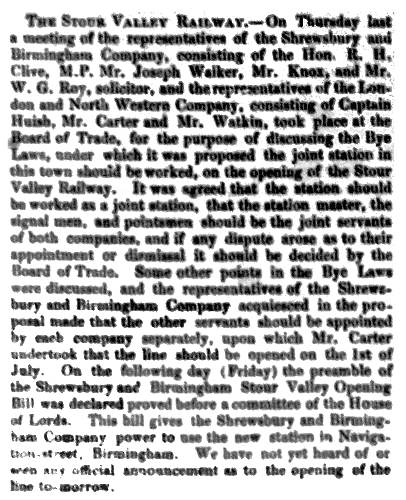
From the Wolverhampton Chronicle, 30th
June, 1852. Courtesy of Richard
Maund. |
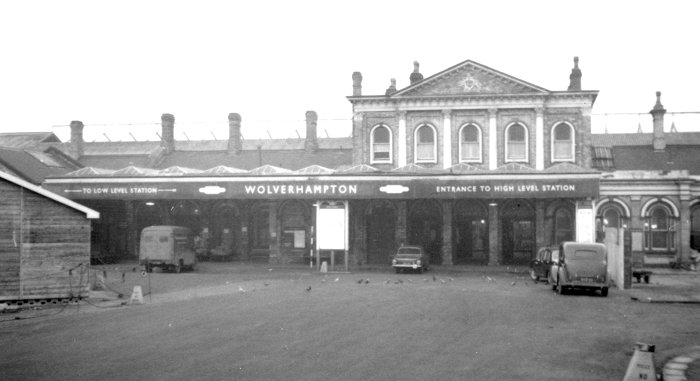
The High Level Station in January 1965, one
year before demolition.
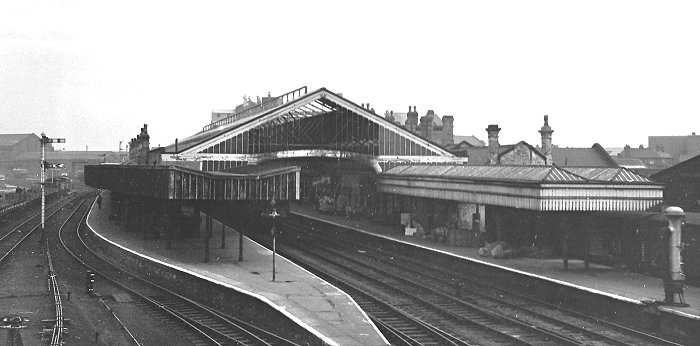
The station in the early 1960s.
|
The London
& North Western Railway had the most extensive coverage in
the country, with a mainline stretching from London Euston
to Carlisle, then on to Glasgow and Edinburgh over the
Caledonian Railway. There were lines to Manchester, Holyhead
and much of North Wales, Leeds, Peterborough, Oxford,
Cambridge, and joint lines to Swansea, Nottingham, Hereford,
Blackpool and Fleetwood, and Sellafield. |
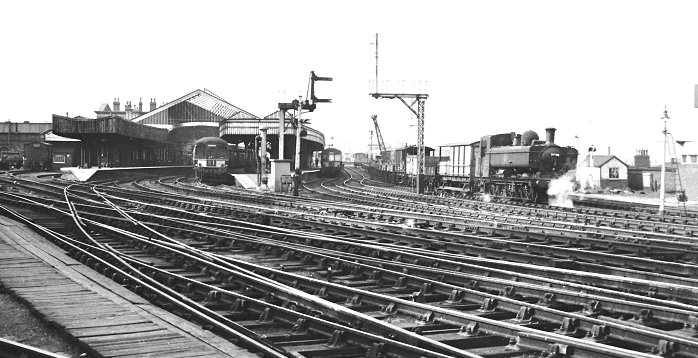
In the early 1960s diesel multiple
units were beginning to take-over from steam. On the
right is an ex-GWR Collett 57xx 0-6-0 pannier tank in
charge of a goods train. |
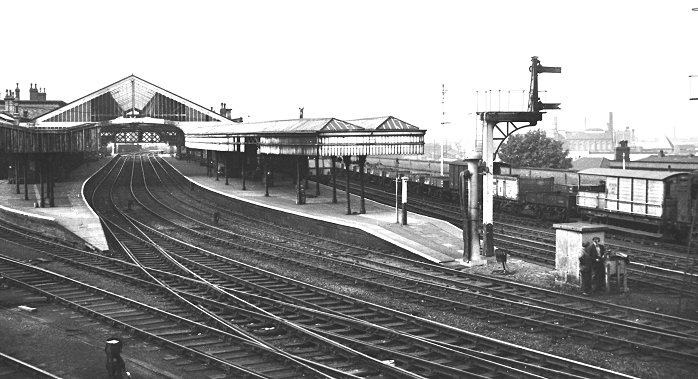
A fine view from the early 1960s before
demolition began.
|
The station soon became a victim of its
own success because the facilities were inadequate for the
large numbers of passengers. In the 1870s around 120
passenger trains and 50 goods trains called there daily. In
1876 the total number of passengers using the station was
936,026. Things got so bad that the town council complained
about the lack of facilities.
The main problems were a shared booking
office and refreshment room, lack of waiting rooms on the up
platform, low and narrow platforms, and a dismal subway
which connected the platforms. The subway was so bad that it
encouraged people to cross on the lines. Several were killed
in the process.
The London & North Western drew up
plans for the station's improvement which were included in a
Bill in 1876. This was successfully opposed by the Great
Western because the new buildings would have been built
across the public's approach road to the Low Level Station.
The plans for improvement were further delayed by the
building of Railway Drive in 1883, which involved the
lengthening of the canal tunnel, to allow the new road to
cross over the canal.
The enlargement to the station finally
took place in 1884, and included the tunnel under the
station which gives public access to the Low Level Station,
and the arcade known as The Colonnades. It seems that some
work on the project had begun by 1880 because some of the
girders in the structure carry that date.
In 1923
the London & North Western Railway became part of the LMS
(London, Midland & Scottish Railway), and in 1948 when the
railways were nationalised, it came under the control of
British Railways. |
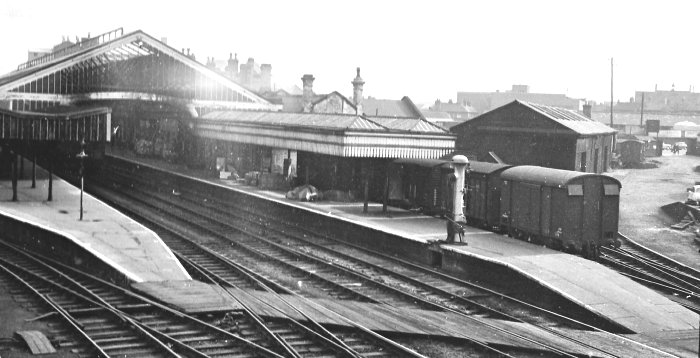
Another view from the early 1960s.
| In the late 1950s work on a modernisation plan began, which involved
the electrification of the West Coast Main Line, and the
Stour Valley Line through Wolverhampton. As part of the
scheme the High Level Station was completely rebuilt. The
overall roof was removed in January and February 1965, and
the station buildings were demolished in January 1966. The
new railway station open on 6th March, 1967 with the
inauguration of the electrified service. |
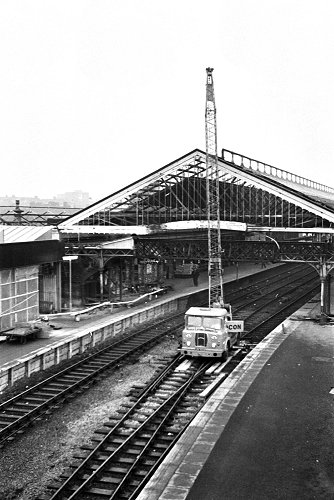 |
|
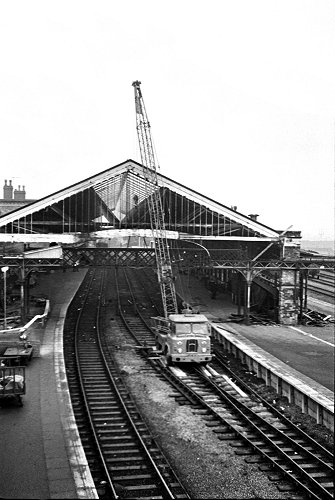 |
|
Two views
from January 1965 as work progresses on the
demolition of the overhead canopy. |
|
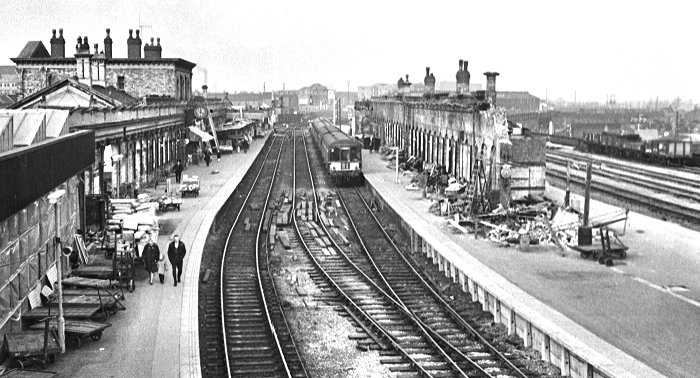
A view from February 1965, taken from the
temporary wooden footbridge.
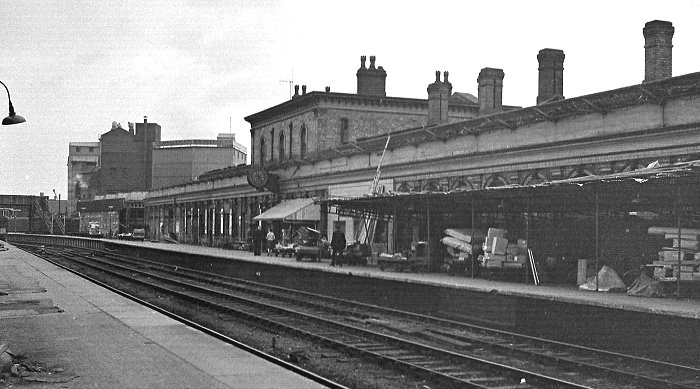
Another view from February 1965 looking at the
back of the station.
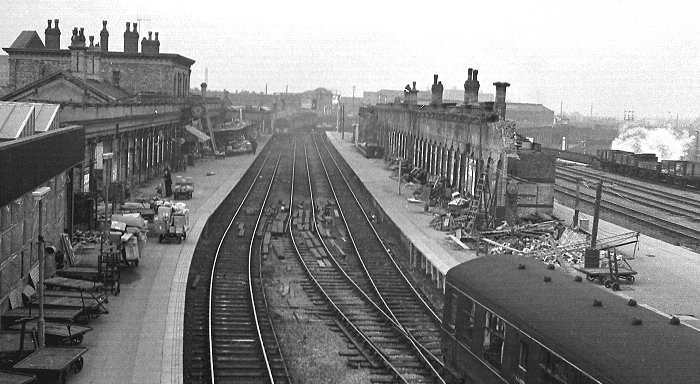
A final view from February 1965, taken from
the temporary wooden footbridge.
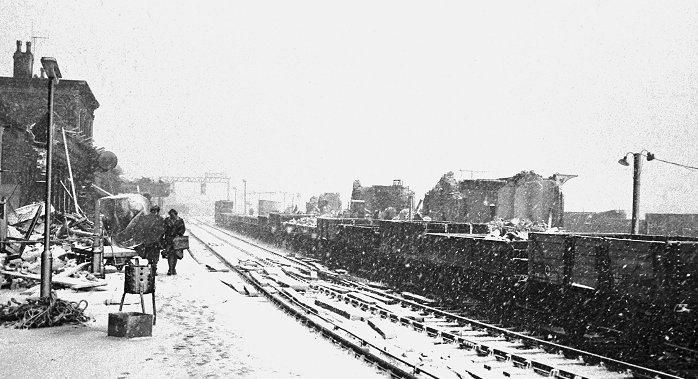
A wintry scene, possibly in November 1965 when
snow blanketed the whole area.
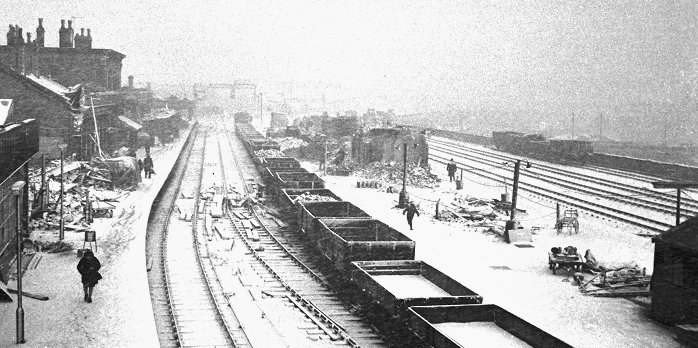
Another view taken on the same day from the
temporary wooden footbridge.
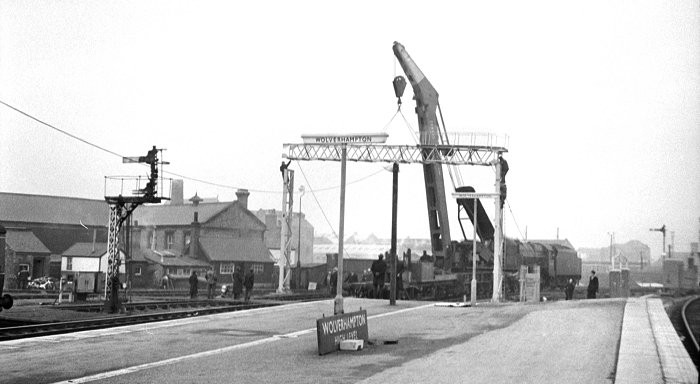
Work on electrification continues with the
removal of the old signal gantry.
I would like to thank Richard Maund for
his help with this section.
 |
|
 |
|
Return to
the beginning |
|
Proceed to
Low Level Station |
|